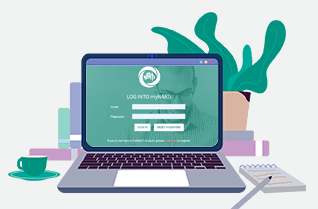What is Deafblind interpreting?
When interpreting for a Deafblind person, an interpreter needs to convey visual information in addition to spoken or signed information. Visual information may include environmental descriptions, facial expressions and reactions.
Deafblind interpreting uses a range of communication techniques, such as:
- tactile sign language
- close range signing
- visual frame signing
- finger spelling
- social haptic communication
Many Deafblind Australians use a modified form of Auslan, including adapted fingerspelling.
Why has NAATI introduced a credential for Deafblind interpreting?
Interpreting is necessary for Deafblind people to participate fully in society. Prior to the introduction of this credential, Deafblind people were unable to access credentialed interpreters trained in Deafblind interpreting.
Specific training is required to perform Deafblind interpreting at a high level. With the development of a training package, NAATI has been able to introduce a credential.
Why does NAATI require specific training for Deafblind interpreting when candidates have already completed interpreter training?
Deafblind interpreting requires a specialised skill set. The interpreter must possess a range of skills, which include various communication techniques, modified Auslan and Deafblind awareness. These skills are not systematically included in existing Auslan or Deaf interpreter training in Australia.
Specific training in Deafblind interpreting ensures that interpreters have the professional skills and knowledge required to practice in this area.
Information for applicants
NAATI advises all candidates to read the following information before applying for this credential.
NAATI offers the Recognised Practising Deafblind Interpreter (RPDBI) credential for interpreters looking to have their skills and experience recognised. A practitioner who holds this credential has satisfied the minimum training requirements and has recent and regular experience as an interpreter but has not had their skills tested by NAATI.
Only interpreters who already hold a NAATI certification in Auslan or Deaf interpreting are eligible to apply for an RPDBI credential.
How do I get this credential?
To be eligible for an RPDBI credential, applicants must satisfy several prerequisites relating to training, work practice, language proficiency and ethical and intercultural competency.
Training and work practice requirements
All candidates applying for an RPDBI credential must have completed at least some formal training in Deafblind interpreting and must already hold a NAATI credential in Auslan or Deaf interpreting.
There is currently one training and work practice pathway for the RPDBI credential.
Pathway |
|
The training requirement for Deafblind interpreting is designed to ensure minimum quality standards for interpreting.
What evidence of training and work practice will NAATI consider?
For evidence of training and work practice, you should submit a transcript from the Monash Deafblind Interpreting Course.
Applicants meet this prerequisite by holding a NAATI certification in Auslan or Deaf Interpreting.
There are no additional EC and IC prerequisites for this credential. However, ethical and intercultural competencies specific to a Deafblind audience are included in the required training. Evidence that you have completed the Monash Deafblind Interpreting Course will be sufficient.
How to apply
To apply for the RPDBI credential, you will need to create an account in our customer portal, myNAATI, and submit your application from there.
Please make sure you have read and understood the Terms and Conditions before applying for this test.

Step one: Register and log in to your myNAATI account and submit an application.

Step two: NAATI will process your application. You will receive an email once your application is processed (generally within a week).






